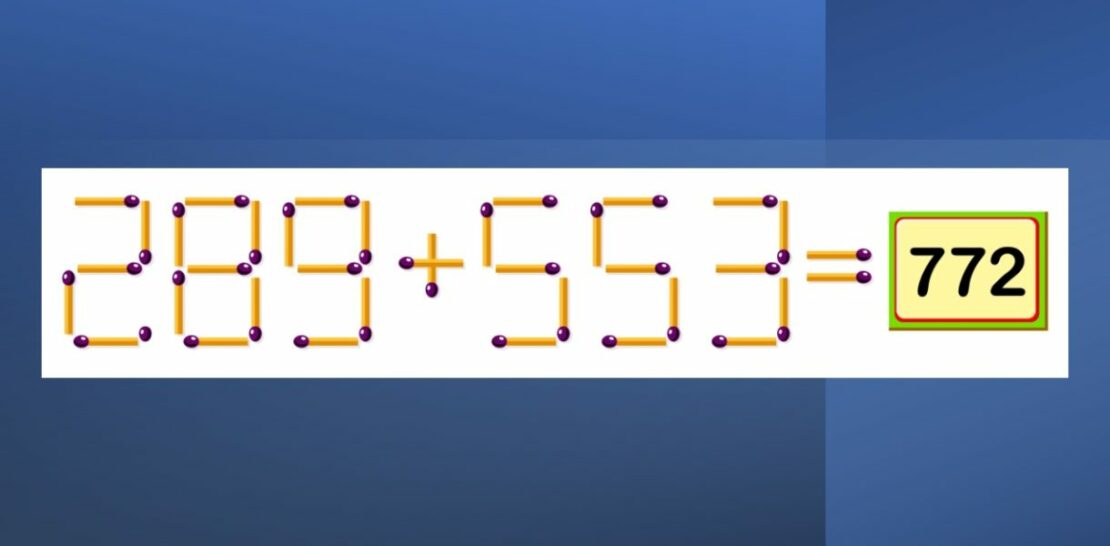Deceptively simple yet tantalizingly complex, the world of mathematical riddles has captured the imagination of countless generations, challenging the brightest minds to unlock the secrets hidden within intricate puzzles.
This article delves into one such riddle that, when solved within a mere 30 seconds, serves as a testament to one’s intellectual prowess and a badge of honor for those who can proudly call themselves a genius.
Join us as we dissect the riddle’s components, explore the underlying mathematical concepts, and reveal the strategies employed by the gifted few who can conquer this enigmatic equation.
The Riddle: An Introduction and its Significance
At first glance, the riddle in question appears to be nothing more than a straightforward arithmetic problem.
- The first component of the riddle introduces a set of numbers that are seemingly unrelated.
- Next, these numbers are manipulated through a series of mathematical operations, further obscuring their relationship.
- Finally, a question is posed, challenging the solver to determine the value of a specific variable or the relationship between the numbers.
What sets this riddle apart from countless others is the time constraint: the solver has only 30 seconds to reach a conclusion. Successfully completing the riddle within this narrow window of time is a feat that only a select few can achieve, thus earning the title of “genius.”
Dissecting the Components: A Deep Dive into the Riddle’s Structure
Upon closer inspection, the riddle can be broken down into several key elements, which reveal the intricate logic and mathematical principles at play.
- Numbers: The riddle revolves around a set of numbers, which may be integers, fractions, or decimals. These numbers serve as the foundation for the riddle and are the primary focus of the solver’s attention.
- Operations: The numbers are subjected to a variety of mathematical operations, such as addition, subtraction, multiplication, and division. These operations transform the original set of numbers, often in surprising and unexpected ways.
- Patterns: Hidden within the riddle are patterns that emerge as the numbers are manipulated. Recognizing and understanding these patterns is crucial to solving the riddle and is the mark of a true genius.
- Variables: The final component of the riddle is the introduction of variables, which serve as placeholders for unknown values. The challenge lies in determining the value of these variables or their relationship to the other numbers in the riddle.
Mastering the Art of Problem-Solving: Strategies for Success
The ability to solve this riddle within the allocated 30 seconds is a testament to one’s intellectual prowess and a true mark of genius. This section will explore several strategies that can be employed to crack the riddle and achieve this coveted status.
1. Visualization: One effective approach to solving the riddle is to visualize the problem. By representing the numbers and operations in a visual format, such as a diagram or flowchart, the solver can more easily identify patterns and relationships between the various components of the riddle. This can, in turn, lead to a more rapid and accurate solution.
2. Simplification: Another valuable strategy is to simplify the riddle by breaking it down into smaller, more manageable pieces. This can be achieved by focusing on individual operations or isolating specific numbers, making it easier to see the relationships and patterns at play. By tackling the riddle in this incremental manner, the solver can chip away at the problem and gradually build towards a solution.
3. Intuition: For some, the key to solving the riddle lies in their intuition. These individuals possess an innate understanding of mathematical principles and are able to instinctively recognize patterns and relationships within the riddle. By combining this natural talent with a strong foundation in mathematics, these gifted solvers can quickly arrive at a solution in the blink of an eye.
4. Practice: Finally, the old adage “practice makes perfect” rings true in the realm of mathematical riddles. By regularly engaging with similar problems, the solver can hone their skills and sharpen their ability to recognize patterns and relationships. Over time, this increased familiarity with the riddle’s structure and components will lead to a heightened level of confidence and a greater likelihood of success within the 30-second time constraint.
Decoding the Math: Key Concepts at the Heart of the Riddle
To fully appreciate the depth and complexity of the 30-second riddle, it is essential to understand the mathematical concepts that underpin its structure. This section will explore four fundamental principles that are integral to the riddle and the strategies employed by those who can solve it within the allotted time.
A. Number Theory: At its core, the riddle is rooted in number theory, a branch of mathematics that deals with the properties and relationships of numbers, particularly integers. Understanding the principles of number theory can provide valuable insights into the patterns and relationships that emerge as the riddle unfolds, aiding the solver in their quest for a solution.
B. Algebra: The riddle also incorporates elements of algebra, a branch of mathematics that uses symbols and letters to represent numbers and the relationships between them. By employing algebraic techniques, such as substitution and simplification, the solver can more effectively manipulate the variables within the riddle and hone in on the correct solution.
C. Combinatorics: Another key concept underpinning the riddle is combinatorics, the study of counting and arranging objects within specific constraints. This mathematical field can help the solver discern the possible permutations and combinations of numbers and operations within the riddle, narrowing down the potential solutions and increasing the likelihood of success within the 30-second time frame.
D. Logic and Reasoning: Perhaps the most crucial aspect of the riddle is the application of logic and reasoning. By employing deductive and inductive reasoning skills, the solver can systematically eliminate incorrect solutions and zero in on the correct answer. A firm grasp of logic and reasoning is the hallmark of a true genius and is essential for conquering the 30-second riddle challenge.
In conclusion, the 30-second mathematical riddle serves as a fascinating test of one’s intellectual prowess, challenging even the most brilliant minds to unlock its secrets within a narrow window of time. By dissecting the riddle’s components, understanding the underlying mathematical concepts, and employing a range of problem-solving strategies, those who can successfully unravel the riddle earn the right to proudly call themselves a genius. As with any complex puzzle, practice and perseverance are key to mastering the art of mathematical riddles, and the journey to unlock the genius within is one that is both rewarding and exhilarating.




